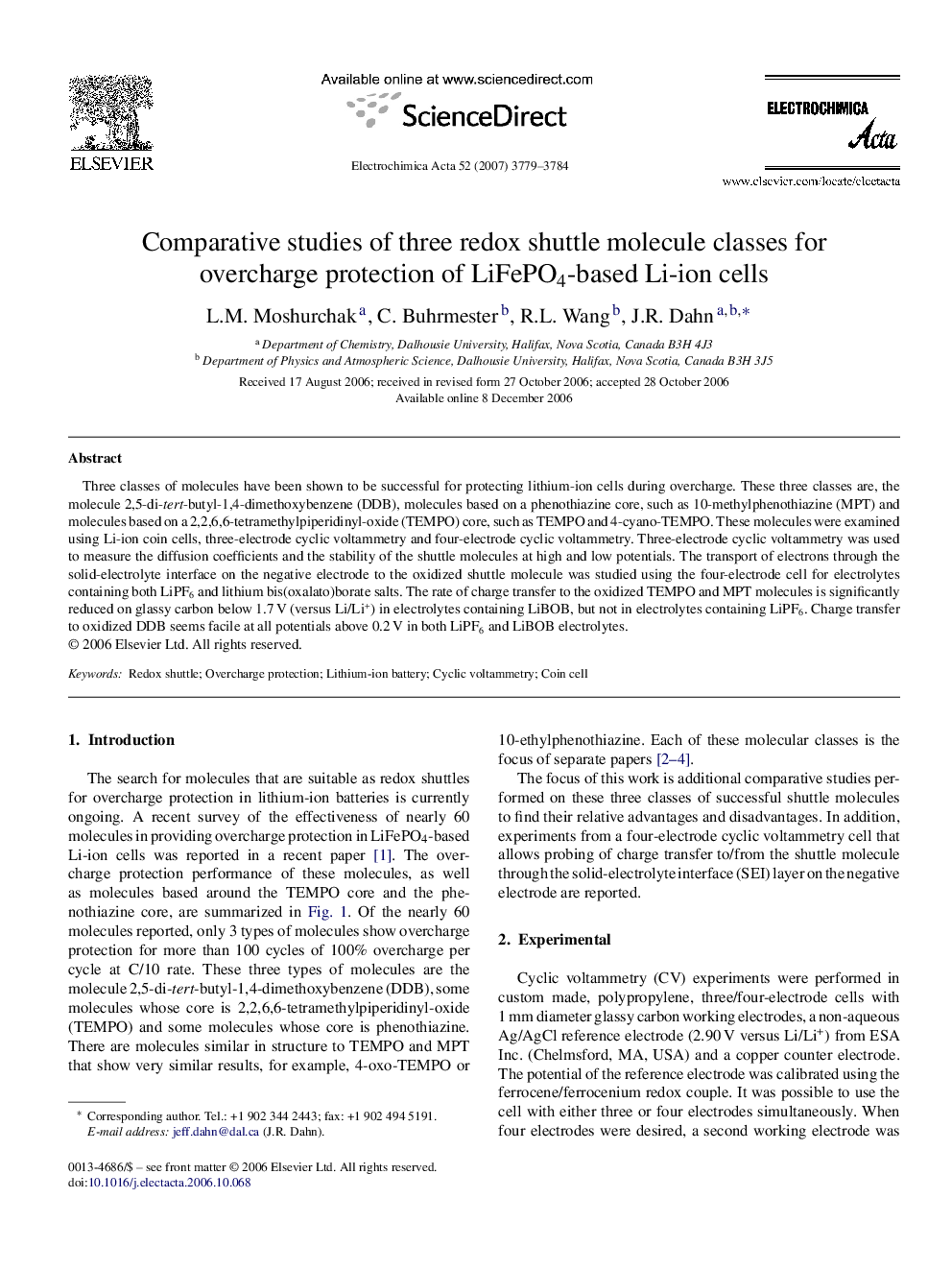| Article ID | Journal | Published Year | Pages | File Type |
|---|---|---|---|---|
| 196075 | Electrochimica Acta | 2007 | 6 Pages |
Three classes of molecules have been shown to be successful for protecting lithium-ion cells during overcharge. These three classes are, the molecule 2,5-di-tert-butyl-1,4-dimethoxybenzene (DDB), molecules based on a phenothiazine core, such as 10-methylphenothiazine (MPT) and molecules based on a 2,2,6,6-tetramethylpiperidinyl-oxide (TEMPO) core, such as TEMPO and 4-cyano-TEMPO. These molecules were examined using Li-ion coin cells, three-electrode cyclic voltammetry and four-electrode cyclic voltammetry. Three-electrode cyclic voltammetry was used to measure the diffusion coefficients and the stability of the shuttle molecules at high and low potentials. The transport of electrons through the solid-electrolyte interface on the negative electrode to the oxidized shuttle molecule was studied using the four-electrode cell for electrolytes containing both LiPF6 and lithium bis(oxalato)borate salts. The rate of charge transfer to the oxidized TEMPO and MPT molecules is significantly reduced on glassy carbon below 1.7 V (versus Li/Li+) in electrolytes containing LiBOB, but not in electrolytes containing LiPF6. Charge transfer to oxidized DDB seems facile at all potentials above 0.2 V in both LiPF6 and LiBOB electrolytes.
